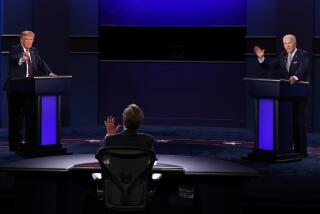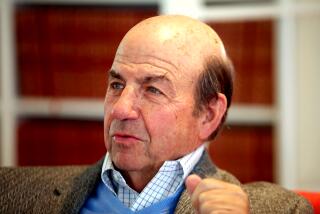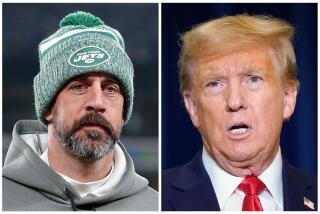Off the Shelf: Trouble seeing the line between fact and fiction
A new biography of the Polish war correspondent Ryszard Kapuscinski alleges that he frequently forged details, invented images and claimed to have witnessed events that he didn’t, in fact, witness. Gerald Posner resigned from the Daily Beast after admitting that he had lifted sentences from a Miami Herald editorial, a Miami Herald blog, Texas Lawyer magazine and a health journalism blog; Posner blamed the “warp speed of the net” and his “master electronic files system.”
The publisher of Charles Pellegrino’s new book, “The Last Train to Hiroshima,” withdrew it from publication following allegations that Pellegrino had created characters and extensively used a source whose status as witness to the bombing of Hiroshima was fabricated. A review of John D’Agata’s “About a Mountain” criticized him for compressing the timeline of some of the events in the book -- which he acknowledges doing in the afterword.
Why does this keep happening over and over and over again? Have we suddenly become a nation of liars? Of lawyers? Of children, incapable of distinguishing between event and interpretation, and between fact and “truth”? Why this overreaction to minor cases of plagiarism? Why this overemphasis on the exact “truth,” which is, of course, impossible to know? As Werner Herzog says, “The boundary line between documentary and feature film is blurred. In fact, it doesn’t exist.”
These nonfiction scandals du jour, these worst-case scenarios, get routinely deployed to position nonfiction as a subset of journalism, which it isn’t. These authors are used as scapegoats to expiate the culture’s sins, its reality hunger. The whole huge loud roar, as it returns again and again, has to do with the culture being embarrassed at how much it wants the frame of reality and, within that frame, great drama.
From the beginning of time, nonfiction writers have invented. In “The History of the Peloponnesian Wars,” Thucydides made up the generals’ speeches. Thomas DeQuincey’s “Confessions of an English Opium Eater” is a heavily fictionalized account of DeQuincey’s addiction to and recovery from opium. Edmund Gosse’s “Father and Son” recounts page after page of supposedly verbatim dialogue from 50 years earlier. George Orwell’s classmates questioned virtually every detail of “Such, Such Were the Joys.” As Jonathan Raban has written, “The line between fact and fiction is fuzzier than most people find it convenient to admit. There is the commonsensical assertion that while the novelist is engaged on a work of the creative imagination, the duty of the nonfiction writer is to tell what really happened. That distinction is easy to voice but hard to sustain in logic. For imagination and memory are Siamese twins, and you cannot cut them so cleanly apart.”
Memory is a dream machine. Nonfiction isn’t “true.” It’s a framing device to foreground contemplation, or at least it is in the nonfiction I love the most -- nonfiction at the highest reaches of literary art. I want to redefine nonfiction upward -- taking nonfiction’s limits and reframing them so that nonfiction can be a serious investigation of what’s “true,” what’s knowledge, what’s “fact,” what’s memory, what’s self, what’s other. I don’t want a nonfiction full of “lies.” I want a nonfiction that explores our shifting, unstable, multiform, evanescent experience in and of the world.
Recommended reading:
James Agee, “Let Us Now Praise Famous Men”
Nicholson Baker, “U & I”
Terry Castle, “My Heroin Christmas”
E.M. Cioran, “The Temptation to Exist”
Bernard Cooper, “Maps to Anywhere”
Alphonse Daudet, “In the Land of Pain”
Annie Dillard, “For the Time Being”
Geoff Dyer, “Out of Sheer Rage”
Amy Fusselman, “The Pharmacist’s Mate”
Eduardo Galeano, “The Book of Embraces”
Simon Gray, “The Smoking Diaries” (four volumes)
Spalding Gray, “Morning, Noon, and Night”
Sven Lindqvist, “A History of Bombing”
Mary McCarthy, “Memories of a Catholic Girlhood”
Leonard Michaels, “Shuffle”
V.S. Naipaul, “A Way in the World”
Maggie Nelson, “Bluets”
Blaise Pascal, “Pensées”
Fernando Pessoa, “The Book of Disquiet”
François le Rochefoucauld, “Maxims”
W.G. Sebald, “The Emigrants”
Lauren Slater, “Lying: A Metaphorical Memoir”
George W.S. Trow, “Within the Context of No Context”
David Foster Wallace, “Consider the Lobster”
Joe Wenderoth, “Letters to Wendy’s”
Geoffrey Wolff, “The Duke of Deception”
Shields is the author, most recently, of “Reality Hunger: A Manifesto.”
More to Read
The biggest entertainment stories
Get our big stories about Hollywood, film, television, music, arts, culture and more right in your inbox as soon as they publish.
You may occasionally receive promotional content from the Los Angeles Times.





